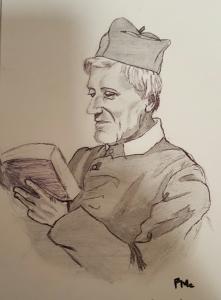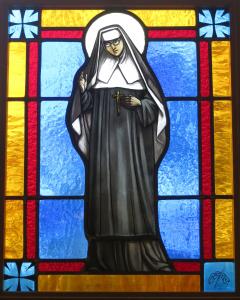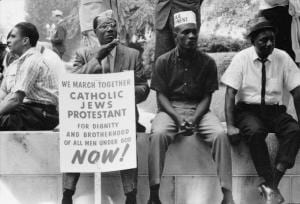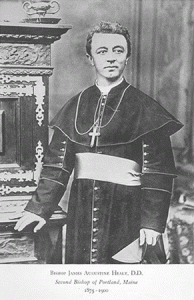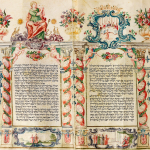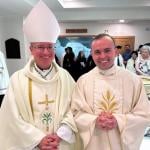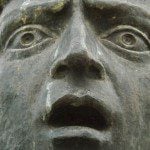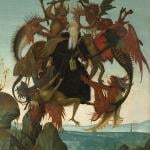My dearest Anna and Johannes, since the 1st of August we’ve been living for over a year in Williamsburg, a town very near New York. We still work for people in New York, we go back and forth in a couple of hours. It is much healthier here than in New York, just like in Germany. All of the small shops are German, 7-8 German-Catholic churches and each one has a Catholic school. We don’t have to go further to church than you do at home. That is a church, it’s like a cathedral, with… [tw0] spires on top. Next to it is a small one like in Germany.* There’s a big school there, with 8-9 teachers, and also that many nuns. The nuns teach the girls and also the little boys until they are grown up…Our little Nikolaus also goes there. We pay 15 cents a week. In the school there are 1,500, all with German parents and all Catholic; the priests visit the schools every day and are very strict. We also belong to this parish. We have a pew in the church. For that we pay one taler every three months. My husband belongs to the St. Joseph’s society. If he gets sick, he gets 4 talers a week sick pay. And if he dies, he will be collected from the house and taken to the churchyard by the members of the society. The society covers all the expenses…We have three priests in our parish. There is confession every Saturday. They are much stricter with confessions and sermons here than in Germany. On Sunday the first Mass is at 6 o’clock, the second one for children at 8, at 9 in the little church next door, at 10 o’clock is High Mass in the Church of the Holy Trinity…. we won’t lose our religion even though we are in America. There are good and bad people of all nationalities. There are bad Catholics here just like in the big cities in Germany. In New York alone there are 42 Catholic Churches, English and German. There they sacrifice and beg for thousands for the Pope. We have the portrait of Pope Pius IX. It cost us 5 talers. We receive the church newspaper every Sunday and see everything that’s happening in Rome.
Between 1850 and 1890, approximately 1.2 million German Catholics came to America. Many settled on Manhattan’s lower East Side and in Brooklyn’s Williamsburg section. Anna Heck was among the many German immigrants who came to Williamsburg. She and her family belonged to Most Holy Trinity parish on Montrose Avenue (seen here in the 1850’s). In January 1869, she wrote a letter to her relatives in Germany, which is an invaluable description of the everyday life of a Catholic immigrant in late nineteenth century Brooklyn:
*Note: the smaller church was the original church, which the parish kept after the larger edifice was completed.



